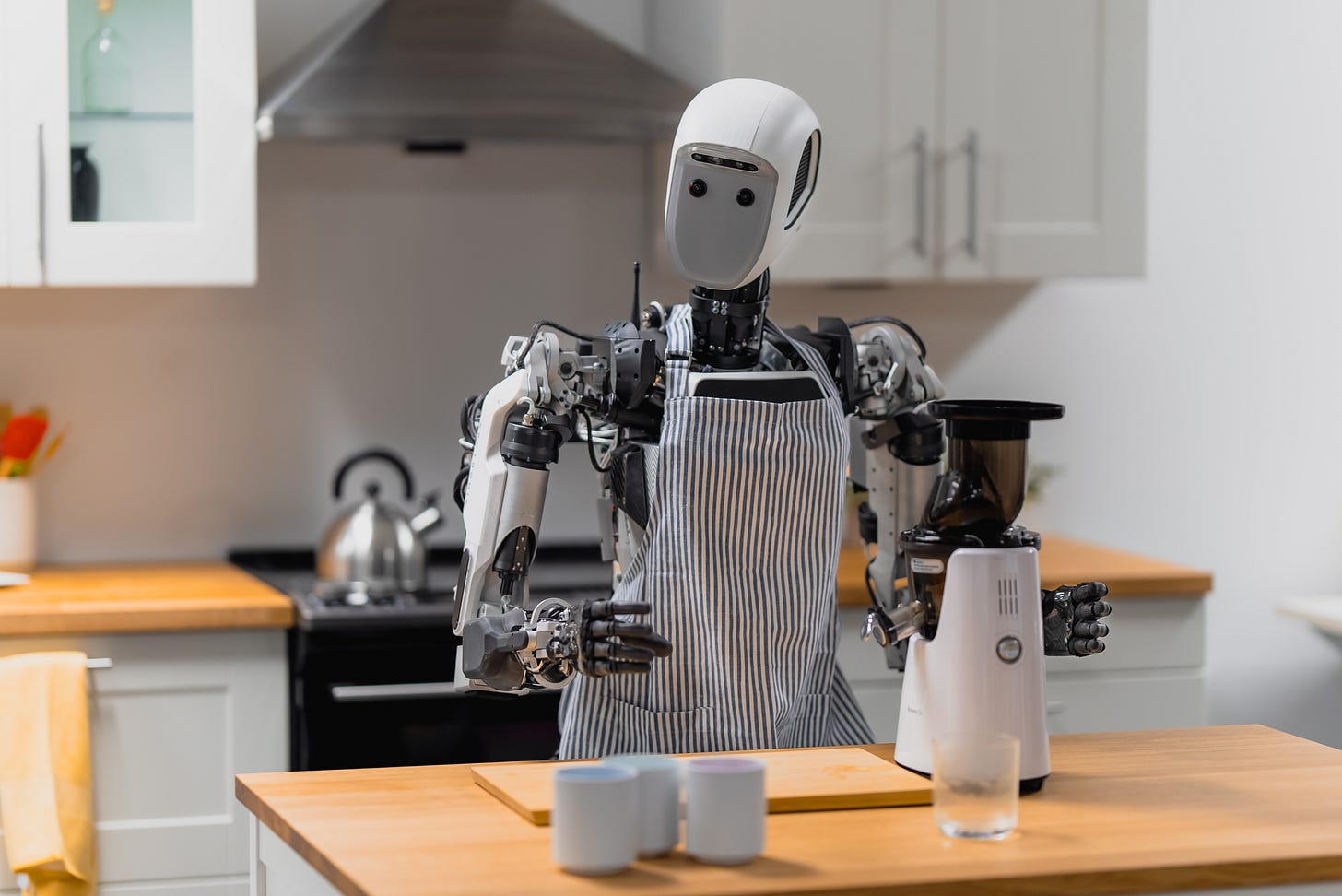Who’s Building America’s Autonomous Edge?
50 startups reshaping how America moves, defends, and builds — and why backing them is critical to U.S. competitiveness
Autonomous systems are rapidly becoming the foundation of 21st-century power — economically, militarily, and industrially. The American Autonomy Initiative aims to speed this transformation by uniting policy, capital, and national ambition behind the innovators driving it.
So who are they?
We’ve mapped 50 of the most dynamic American startups building autonomous systems across land, air, sea, space, and robotics.
Land
On land, autonomy is changing how we move goods, grow food, and build infrastructure.
Outrider automates yard operations for logistics hubs, using autonomous electric yard trucks to improve safety and efficiency in the supply chain.
Monarch Tractor is developing the world's first fully electric, driver-optional smart tractor.
Gatik, Aurora Innovation, and Kodiak Robotics are reshaping freight logistics with autonomous middle- and long-haul platforms.
Teleo, Plus, and SafeAI convert heavy equipment, in construction, mining, logistics, and other industries, for remote and autonomous use.
Sabanto and Polymath Robotics are retrofitting existing off-highway industrial vehicles, such as tractors, bulldozers, and mining equipment with affordable autonomy.
Nuro is developing a self-driving system for autonomous operation on any vehicle platform, navigating urban roads with natural driving behavior.
Zoox has built an autonomous EV designed from the ground up as a robotaxi for urban ride-hailing.
Air
In the air, AI pilots, drone swarms, and self-flying cargo craft are redefining aviation and aerial defense.
Shield AI and Anduril are pushing defense autonomy with intelligent flight systems and a range of systems, including drones, underwater vehicles, and ground robots.
Zipline, Valkyrie, and Elroy Air are expanding aerial logistics networks with an autonomous middle mile logistics network.
Merlin Labs and Reliable Robotics plug into existing aircraft to turn them into fully autonomous systems from take‑off to touchdown.
Skydio and Near Earth Autonomy specialize in vision-based drones that navigate complex environments without human input.
Rotor Technologies and Pyka build large autonomous aircraft for agriculture, construction, and aerial work.
Censys Technologies develops fixed-wing VTOL platforms for mapping, inspection, and public safety.
Sea
At sea, autonomy is quietly transforming maritime security and exploration.
Saildrone and Ocean Aero deploy long-endurance drones—both above and below the surface—powered by wind and solar energy for scientific, commercial, and defense applications.
Saronic and ThayerMahan build systems for maritime awareness and coastal defense.
Sea Machines Robotics supplies autonomous command and control systems for commercial vessels through autonomy kits allowing remote piloting and collision avoidance.
Terradepth and Bedrock Ocean Exploration are mapping the world's oceans and seafloor using autonomous underwater vehicles.
Amidon Heavy Industries develops autonomous robots to monitor and protect seabed infrastructure.
Space
In space, autonomy enables scalable, resilient operations in orbit.
Orbit Fab and Starfish Space are extending the life of satellites by building a network of in-orbit fuel depots and autonomous satellite-servicing vehicles.
Varda Space Industries produces materials in space that are difficult or impossible to make on Earth using in-orbit autonomous manufacturing.
Capella Space and True Anomaly offer autonomous sensing and maneuvering satellites.
Loft Orbital and Astranis provide cheaper, easier, and faster satellite deployment.
Relativity Space and Stoke Space are pioneering automated, reusable launch systems.
Elsewhere
Here on Earth, embodied AI is emerging across warehouses, hospitals, and homes.
Figure AI, Apptronik, and Agility Robotics are developing general-purpose humanoids designed to work across a variety of industries and applications, including logistics, manufacturing, and retail.
Diligent Robotics and Collaborative Robotics assist healthcare teams with logistics and delivery through their collaborative robots which work alongside humans.
Dexterity AI and Pickle Robot tackle complex warehouse tasks—such as loading and unloading trucks at distribution centers—using teams of autonomous machines equipped with human-like dexterous skills.
Miso Robotics restaurant kitchens with robots like Flippy 2, which can perform all fry station duties, including filling, cooking, and emptying baskets.
Hello Robot's Stretch allows users to control a mobile manipulator remotely via a web browser.
Atomic Industries applies AI and automation to manufacturing tooling and production workflows.
As we see it, these startups are building American capacity. The American Autonomy Initiative would help them grow stronger and scale faster.
Like it or not, autonomous systems are the backbone of future competitiveness. Mastery of autonomy will determine who controls global supply chains, secures critical infrastructure, builds drones, and sets the standards for next-generation defense. The nations that lead in autonomous technology will shape the economic and security rules of the 21st century. Backing autonomy startups is key to maintaining America’s edge.
The market for autonomous systems is already expanding rapidly. But smart public policy, investment, and vision can push it further, faster, and ensure American leads. The future of American competitiveness will be decided by how boldly we back the people building it.





All the more reason for the US to secure access to rare earth minerals!
This is an excelent mapping of the American autonomy ecosystem. The land category breakdown is particularly instructive - it shows how autonomy is segmenting into different niches (yard ops, agriculture, freight logistics) each with distinct regulatory paths and commercialization timelines. Kodiak's positioning in long-haul freight alongside Aurora and Gatik highlights a key strategic decision: focusing on well-structured highway corridors rather than trying to solve the full urban driving problem. What strikes me is the sheer capital intensity required for these companies to achieve scale - which is why the American Autonomy Initiative's policy support could be crucial. Without coordinated regulatory frameworks across state lines, companies like Kodiak face a fragmented deployment landscape. Do you think the bottleneck will be technical, regulatory, or capital formation?